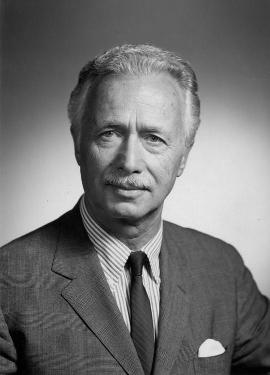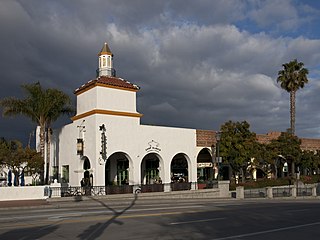
Pietro Belluschi was an Italian-American architect. A leading figure in modern architecture, he was responsible for the design of over 1,000 buildings.

Charles Simonyi is a Hungarian-American software architect.

Victor Eugene Steinbrueck was an American architect, best known for his efforts to preserve Seattle's Pioneer Square and Pike Place Market. He authored several books and was also a University of Washington faculty member.

Lionel H. ("Spike") Pries, was a leading architect, artist, and educator in the Pacific Northwest.
Roland Terry was a Pacific Northwest architect from the 1950s to the 1990s. He was a prime contributor to the regional approach to Modern architecture created in the Northwest in the post-World War II era.
Carl Frelinghuysen Gould also spelled Carl Freylinghausen Gould, was an architect in the Pacific Northwest, and founder and first chair of the architecture program at the University of Washington. As the lead designer in the firm Bebb and Gould, with his partner, Charles H. Bebb, Gould was responsible for many notable Pacific Northwest buildings, such as the original Seattle Art Museum and for the campus plan of the University of Washington.

Paul Hayden Kirk was a Pacific Northwest architect. Paul Kirk's designs contributed to development of a regionally appropriate version of Modern architecture. Many of his buildings are as much appreciated today as they were at the time they were built.
David E. Miller is an American architect. He is a co-founder, with Robert Hull of the Miller/Hull Partnership, and an architecture professor at the University of Washington where he served as Chair of the UW Department of Architecture from 2007 to 2015.
Thomas L. Bosworth FAIA is an American architect and architectural educator. His best-known structures are those he designed for the Pilchuck Glass School between 1971 and 1986, but his primary focus in his thirty-five year professional career has been the design of single-family residences across the Pacific Northwest.
Jeffrey Karl Ochsner is an architect, architectural historian, and professor at the University of Washington in Seattle. He is known for his research and writing on American architects Henry Hobson Richardson and Lionel H. Pries, and on Seattle architecture; he has also published articles that link architecture and psychoanalysis.

Tom Kundig is an American architect and principal in the Seattle-based firm Olson Kundig Architects. He has won numerous professional honors.
Astra Zarina was an architect and professor in the University of Washington Department of Architecture. She is best known for her creation of the University of Washington Italian Studies programs and her founding of the UW Rome Center.

The College of Built Environments is the architecture and urban planning school of the University of Washington, a public research university in Seattle, Washington.

Paul Thiry (1904–1993) was an American architect most active in Washington state, known as the father of architectural modernism in the Pacific Northwest. Thiry designed "some of the best period buildings around the state of Washington during the 1950, 60s and 70s."

Fred Bassetti was a Pacific Northwest architect and teacher. His architectural legacy includes some of the Seattle area's more recognizable buildings and spaces. The American Institute of Architects (AIA) described his role as a regional architect and activist as having made significant contributions to "the shape of Seattle and the Northwest, and on the profession of architecture."
Grant Hildebrand is an American architect and architectural historian who is Professor Emeritus in the Department of Architecture in the College of Built Environments at the University of Washington in Seattle.

University Unitarian Church was designed by Seattle architect Paul Hayden Kirk in 1959. The church is located in the Wedgwood, Seattle neighborhood at the corner of 35th Avenue NE and 68th Street. The building is approximately a mile and half Northeast of the University of Washington Campus and sits across from the Northeast Branch of the Seattle Public Library. It was designed during the time when architect Kirk was working as a sole practitioner.
Phillip Jacobson is a Seattle architect and university professor.
Dearborn-Massar was a mid-20th-century American firm specializing in architectural photography founded by Phyllis Dearborn (1916–2011) and Robert J. Massar (1915–2002).

The architecture of Seattle, Washington, the largest city in the Pacific Northwest region of the U.S., features elements that predate the arrival of the area's first settlers of European ancestry in the mid-19th century, and has reflected and influenced numerous architectural styles over time. As of the early 21st century, a major construction boom continues to redefine the city's downtown area as well as neighborhoods such as Capitol Hill, Ballard and, perhaps most dramatically, South Lake Union.










